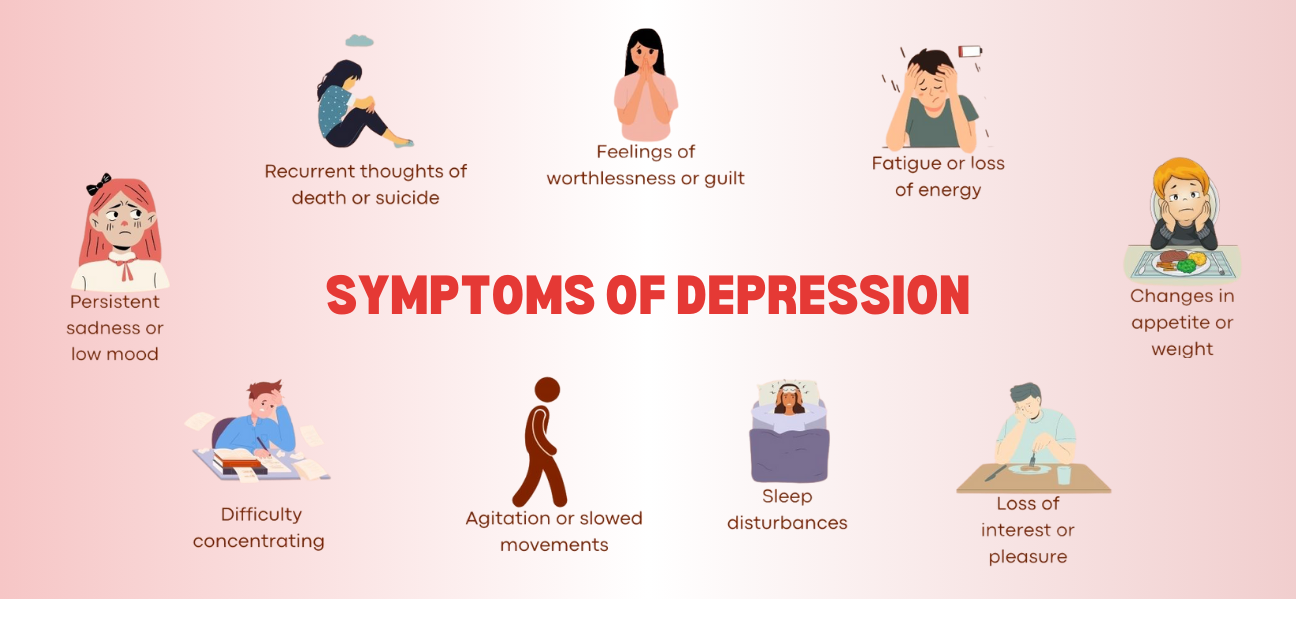Posted on March 5, 2025
Depression is one of the most common mental health conditions in the world, yet it often remains misunderstood. Whether you're personally dealing with depression or supporting someone who is, it’s essential to understand what depression truly is, how it manifests, and the ways it can be managed. In this blog, we'll explore the signs, causes, treatments, and most importantly, ways to find hope and healing.
Depression is a mood disorder marked by a continual sense of sadness and a disinterest in previously enjoyable activities. It may also create challenges in thinking, memory, eating, and sleeping.
While feeling sad or grieving during tough life events, like job loss or divorce, is normal, depression differs in that it persists nearly every day for at least two weeks and includes additional symptoms beyond just sadness.
There are various types of depressive disorders, with clinical depression, commonly referred to as major depressive disorder, being the most severe and recognized form. Without treatment, depression can intensify and persist longer, potentially leading to self-harm or suicide. Fortunately, many effective treatment options exist to relieve symptoms.
The American Psychiatric Association’s Diagnostic and Statistical Manual of Mental Disorders, Fifth Edition (DSM-5), classifies depressive disorders into several categories:
Some specific forms of major depressive disorder include:
Individuals with bipolar disorder may also experience episodes of depression alongside manic or hypomanic episodes.

Symptoms of depression can range from mild to severe and may manifest differently for each individual. Common symptoms include:
It's normal to occasionally feel sad or "down in the dumps" as part of the human experience. However, a diagnosis of depression requires that these symptoms occur for most of the day, nearly every day, for more than two weeks, along with a noticeable change in daily functioning (e.g., work or school performance, personal relationships, and hobbies). The good news is that depression is highly treatable.
The exact cause of depression is not fully understood, but researchers believe several factors contribute to its development, including:
It's normal to occasionally feel sad or "down in the dumps" as part of the human experience. However, a diagnosis of depression requires that these symptoms occur for most of the day, nearly every day, for more than two weeks, along with a noticeable change in daily functioning (e.g., work or school performance, personal relationships, and hobbies). The good news is that depression is highly treatable.
Healthcare providers diagnose depression by thoroughly assessing your symptoms, medical history, and mental health history. They may identify specific types of depression, such as seasonal affective disorder or postpartum depression, based on the nature of your symptoms.
To be diagnosed with depression, you must present five or more depressive symptoms nearly every day over two weeks. Your provider may also order medical tests, such as blood tests, to rule out any underlying medical conditions that might be causing your symptoms.
Depression is one of the most treatable mental health conditions, with approximately 80% to 90% of individuals who seek treatment responded well. Treatment options include:
In addition to professional treatment, there are various self-care strategies you can adopt at home to help alleviate depression symptoms, including:
By combining professional help with self-care, individuals can work towards managing and improving their depressive symptoms effectively.
While you can’t always prevent depression, you can lower your risk by:
Patient Health Questionnaire-9 (PHQ-9), is a widely used screening tool to assess the severity of depressive symptoms in adults, allowing healthcare professionals to identify potential cases of depression and monitor treatment effectiveness by asking patients to rate how often they have experienced various depressive symptoms over the past two weeks; a higher score indicates greater depression severity.
In addition to depression, it also measures a variety of mental health conditions such as anxiety, panic disorder, sleep disorders, and more.
To look for the Patient Health Questionnaire-9, click on the image
Interpretation:
The prognosis varies based on:
Untreated depression can:
If you have suicidal thoughts, seek immediate help by calling emergency numbers.
If you have depression symptoms, consult a healthcare provider for an accurate diagnosis and treatment options. If your current treatment isn't effective or causes side effects, discuss alternatives with your provider.
Note: Depression is common and treatable. If you experience symptoms, reach out to your healthcare provider. Early intervention can lead to better outcomes.